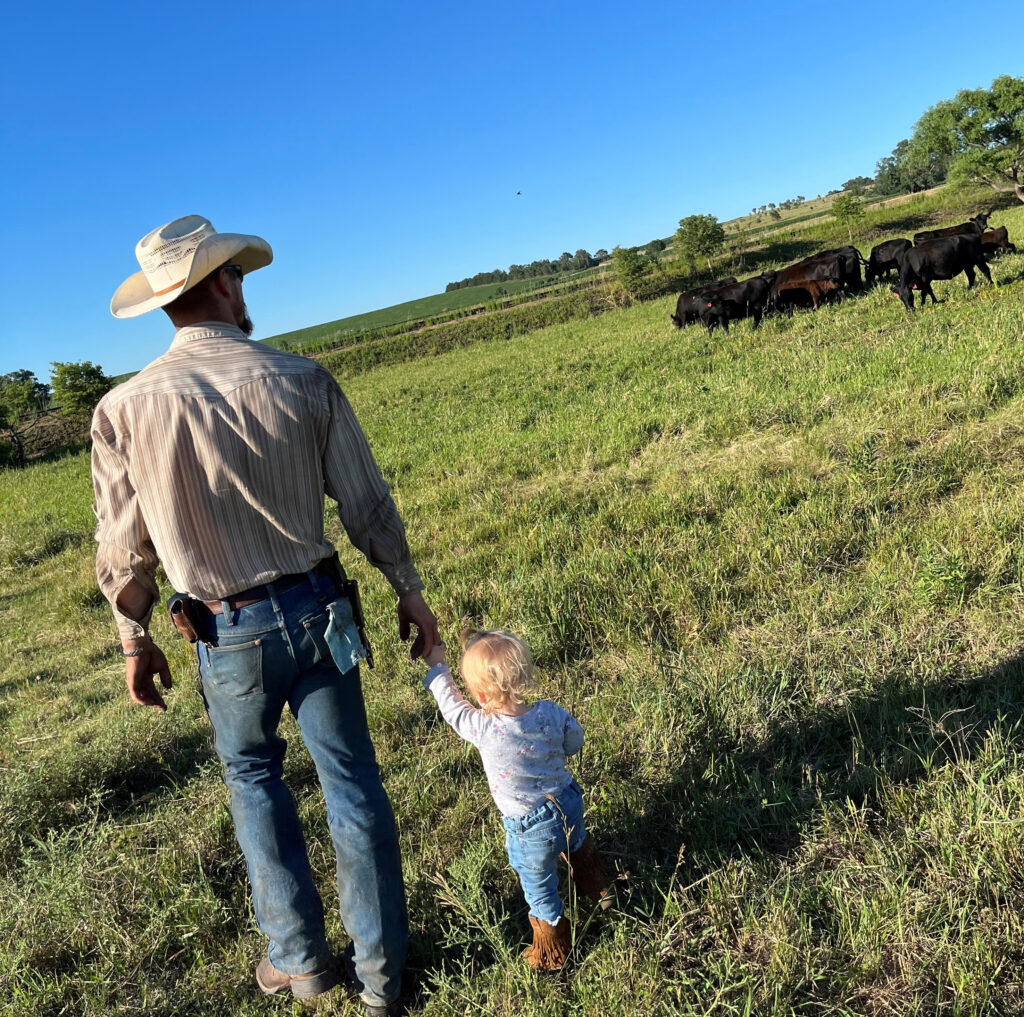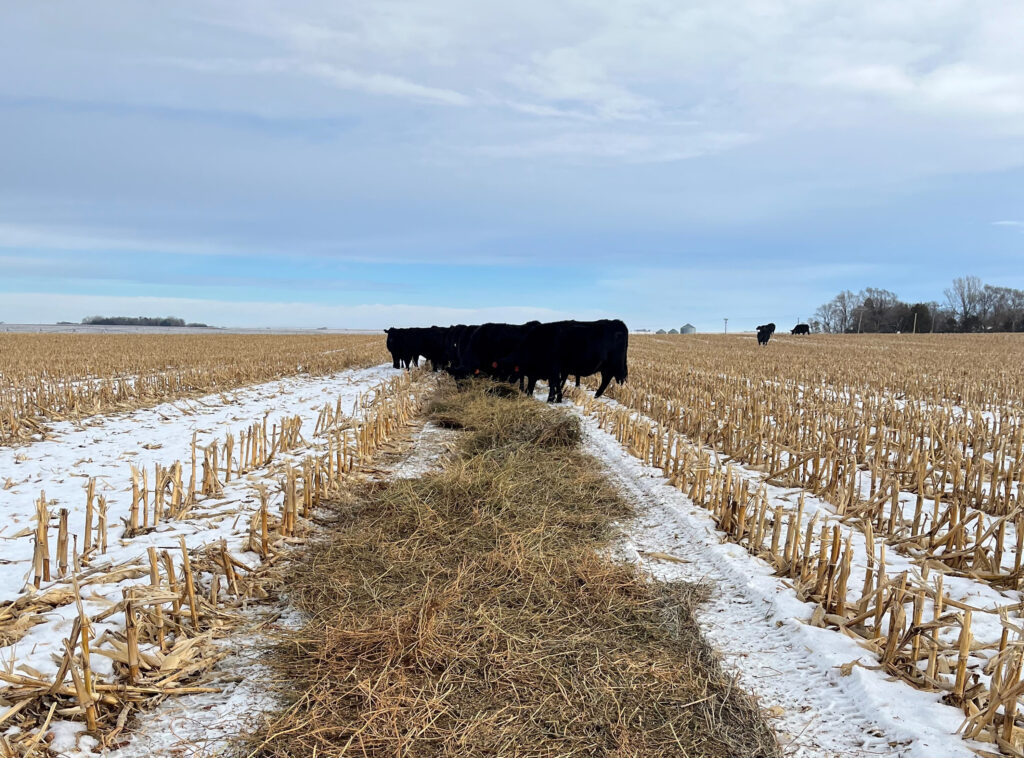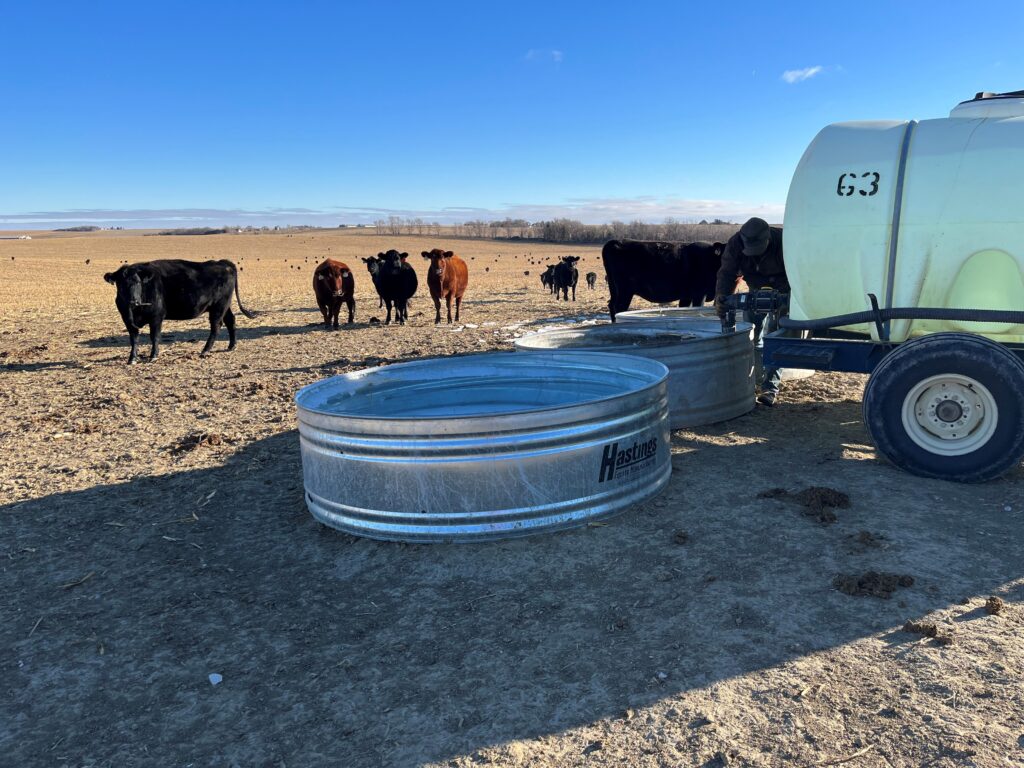As farmers, we care about our cattle, and their welfare is very important to us. We want our cattle to be healthy so they are productive and aid in our goal of providing high quality beef to tables across the state. The weather is a big factor in how often our cattle require attention. We tend to their feed and water needs, along with making sure their environment is comfortable.

During the summer months, our cattle graze on native prairie grasses in the Nebraska Sandhills, which provide them most of the nutrients they need for the season. Water is readily available by way of ponds or water tanks filled by windmills. As farmers, we believe in utilizing and preserving our natural resources the best we can to keep the ecosystem thriving!
As the fall weather approaches, we bring the herd to our own, freshly cut cornfields which provide more energy to the cattle and adds a variety of forage for their diet. We work with our animal nutritionist to make sure they have mineral choice offerings alongside the cornstalks. Cattle need more calories in the fall and winter to keep their bodies warm, so we make sure they are efficient with their feed consumption along with mineral intake. Having a balanced diet helps maintain their body weight and transition to the climate as the weather changes.
During the winter, cattle require a bit more attention. Extended periods of cold will increase the cattle’s need for energy by 10-30%, and for each degree below 32°F, it increases their feed intake by an additional 1%. Recently, the temperature was a below zero wind chill, so we offered the cattle a choice of feed by providing round bales of hay. This gives them an additional source of feed while out on cornstalks.

In addition to feed sources, cattle require water to drink, just as all living things do. In the summer months cattle drink about 10 gallons of water per day, and in the winter months their water intake increases to 20-plus gallons per day. No matter the time of year, lactating cows drink twice as much water to provide for their calves. Think about a breastfeeding mother providing for her newborn. Regardless of the time of year, water is essential to our cattle. However, it takes more time and effort on our behalf in the winter months to make sure water is available, free and open. After moving the herd to cornstalk fields, there is usually no access to electricity or ponds. As a result, we haul water daily to stock tanks and break ice with an ax if needed. If a farmer is lucky enough to have access to electricity, they can provide tank heaters which prevents the water from freezing.
As you can see, winter conditions keep cattle farmers and ranchers busy “making the rounds” in order to keep plenty of water and feed available for the animals. The saying, “To everything, there is a season” has its own meaning for a cattle farmer.

